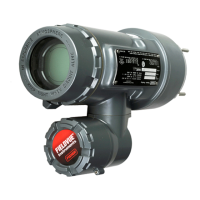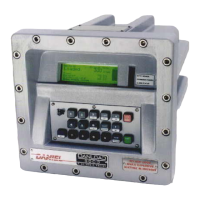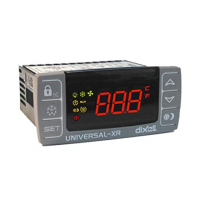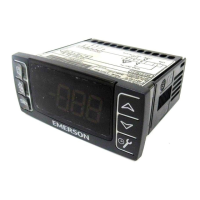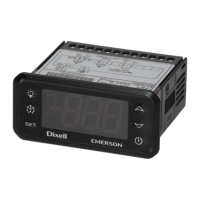DL8000 Preset Instruction Manual
3-40 Modules Revised February-2016
The default values for the EIA-422/485 (RS-422/485) communications
are: 19200 Baud rate, 8 data bits, 1 stop bit, and no parity. The
maximum rate is 57.6K bps.
EIA-422/485 (RS-422/485) communication modules include LED
indicators that display the status of receive and transmit activity. See
Tables 3-14 and 3-15.
Table 3-14. EIA-422 (RS-422) Signal Routing – Comm3, Comm4, and Comm5
Lit when module (Comm3, Comm4, or Comm5) is currently receiving.
Lit when module (Comm3, Comm4, or Comm5) is currently transmitting.
Table 3-15. EIA-485 (RS-485) Signal Routing – Comm3, Comm4, and Comm5
Lit when module (Comm3, Comm4, or Comm5) is currently receiving.
Lit when module (Comm3, Comm4, or Comm5) is currently transmitting.
Note: The EIA-422/485 (RS-422/485) modules are isolated on the field
side.
Caution
You can induce ground loops by tying commons from various modules
together.
EIA-422/485 (RS-422/485) communications provides EIA-422/485
(RS-422/485) signals on the Comm3, Comm4, or Comm5 port
depending on where the module is installed. Wiring should be twisted-
pair cable, one pair for transmitting, and one pair for receiving. The
EIA-422 (RS-422) module uses four wires and the EIA-485 (RS-485)
uses two wires for connectivity.
3.3.7 EIA-422/485 (RS-422/485) Jumpers and Termination Resistors
Four jumpers—J3, J4, J5, and J6—are located on the EIA-422/485 (RS-
422/485) communications module (see Figure 3-41). These jumpers
determine in which mode the module runs (RS-422 or RS-485) and if
the module is terminated. See Tables 3-16 and 3-17.
Terminations are required on the two EIA-422/485 (RS-422/485)
communication modules located at the extremities of the circuit. That is
to say, the two outside modules require terminations in order to
complete the communications circuit.

